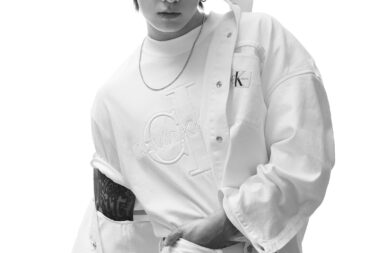Life often craves for that perfect background music when one fine drizzly evening you are thrown into the pits of sadness with the whole world planning your doom, with nothing working in your favour, with you feeling like the ever cursed main lead of a K-drama. You, pining soul, deserve that background music, my suggestion being EXO’s “Lucky.”
Let not that suggestion cause a jarring note in your melodramatic bout of self-pity; for with the onset of instrumental covers anything seems possible, even a splendid ballad version of “Lucky” on piano with the soft pitter-pattering rain in the background (in case, you are doubly unfortunate of being sad on a scorching hot day). No longer do we need to keep wondering how a popular song would sound when arranged differently; musically adept fans have embarked on the melodious mission of fulfilling our musical fantasies and giving K-pop songs surprising makeovers.
[youtube http://youtu.be/GEWs5Xr_iiE]
For most international consumers, K-pop songs lyrically don’t hold much value because of the language barrier. Even while listening to it, the language only seems familiar but not understandable — being more functional in adding to the tonal body of the song. So, when the lyrics are done away with, it does not seem like a major loss to the quality of the song. However, it does leave an awkward gap and quite unconsciously, the lyrics (or whatever we understand of it) keep on playing in the head, which is why instrumentals are often reserved to back vocal covers. What has been taken out needs to be compensated. If the limelight is averted from the vocals it needs to be focused on something else, and this is where instrumental covers come into play.
Instrumental covers fill that gap by refocusing our attention on musical instruments which becomes both the flesh and skeleton of the song. The success or failure of the song is hinged upon the instrument. And this complete dependence on it happens only because the song, before being reincarnated, is pulled apart note by note.
[youtube https://www.youtube.com/watch?v=I_WIKNK9-jk]Sometimes covers take the help of two to three instruments and a background beat. The beat then is the skeleton, with the instruments being layered on creating a foundation as well as embellishing the song. Based on the final products, these are relatively easy covers for they don’t deviate much from the multi-layered original.
Upping the ante by several notches is the single instrument based covers. Musical creativity is restricted to a single major instrument and that restriction seems to create more magic than expected. With the senses focused on a single type of tone, there is lesser risk of an excess or over-creativity. Such covers are extremely neat and personally, evoke more emotions compared to their sibling instrumentals. The rhythm – not the beat – forms the foundation of the song while the tones add to beautifying the flesh.
[youtube https://www.youtube.com/watch?v=UmplmxwE2WM]It is the relation between tone and beauty which makes such covers possible despite being unconsciously compared to the original, because beauty is highly subjective. This subjectivity leads to consumers liking the original, and also appreciating the cover. The cover may be distinct from the song but it is also a less glitzy version of the original. Instrumental covers would be the well-fitted, polished suits of the musical world; simple yet refined.
But considering how they are covers, do these instrumentals hold a chance of being independent musical entities? Hell yeah! While it is still the offspring of programmed music, dependent on an external object in its creation, one does not need prior knowledge of the original to appreciate the cover. These covers are not imitations but inspired products for they select only the broader musical structure, or a key musical component of the original song, twisting and turning it into an entirely new arrangement.
[youtube http://youtu.be/Zrue1gw6Pw8]They stand independent also because they don’t come with pre-designed narratives unlike lyrical songs. The moment one knows the story conveyed by a song, there is almost an impulsive tendency to understand it only within that specified paradigm, and being unable to cope with the linguistic value of the song, the restricted comprehension is inevitable. Instrumental covers tune that barrier by expanding horizons of meaning-making, giving us pure music as the only hint. They are a master at open-ended story-telling giving us the opportunity to make the song our own in any manner we may prefer to.
K-pop, with its tendency of showcasing financial power and musical talent within a single song often creates a cacophonous composition which after two or three listens hurts the ears. Instrumental covers strip the song of its excesses and present its very soul to the audience. It is organic music and it gives better shape to vague emotions of joy and sadness. It is the harmonious rebuttal to the accusation of K-pop being K-pop only because of its language. Tweaking a cultural product doesn’t imply that it wasn’t an universal entity to begin with, in fact, it’s very adaptability to the right kind of appropriation makes it a delight for mediums of universalization.
Varying tastes direct fans to various kinds of instrumentalisation, so what are your favourite instrumental covers?


